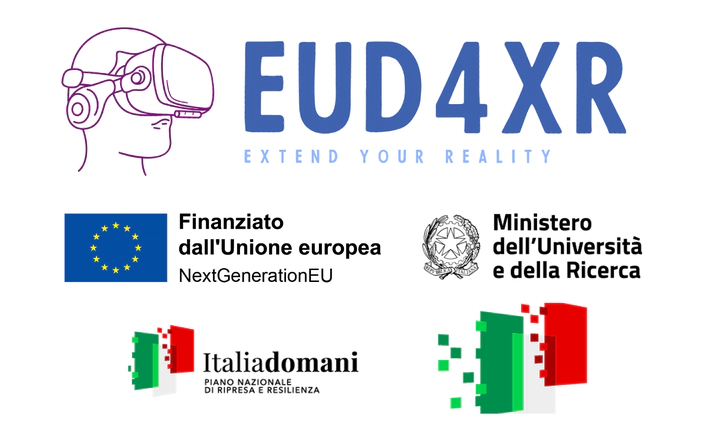EUD4XR

The project aims to empower end-users to create XR content autonomously by developing an End-User Development (EUD) methodology. This involves three roles: Element Builders (EB), professional developers providing pre-defined XR elements; End-User Developers (EUDevs), users without programming skills who compose and configure elements; and XR consumers, the final users. EUDevs will use an authoring tool to specify object interactions in natural language sentences, with guidance from an intelligent Conversational agent. The system will be validated across various domains (virtual museum, smart home, training) to demonstrate its generality and undergo empirical user experience evaluation.
The proposal has been funded among Italian Relevant National Projects, year 2022 by the Italian Minister for the University and Research and the European Commission (Next-Generation EU).
Prof. Lucio Davide Spano is the Principal Investigator and head of the research unit at the University of Cagliari. Dr. Marco Manca from the HIIS lab is the head of the research unit at ISTI-CNR in Pisa.
Abstract
Nowadays, eXtended Reality (XR) technologies are quite mature and affordable to users. However, to become actually adopted it is key to provide end-users with easy support for creating content autonomously, without needing specific programming knowledge. Shifting the entire building process towards end-users is not feasible, as XR development requires various skills, usually involving e.g. 3D modelling, code development, design. While end-users could configure an XR environment by using scene builders [23], [24], [8], they typically start struggling when defining its dynamic behaviour (i.e. how objects interact with users/other objects). Currently, tools supporting the articulation of dynamic behaviour are too complex for end-users, as they target skilled people [23], or limit to support 3D objects animations [17]. Also, existing software development life cycles involve only technical people and are too slow to respond to the evolving needs of variegated users’ categories, also because professional developers often lack the domain knowledge to address user requirements. Thus, a viable way to make XR applications better comply with users’ expectations is to have users more active in the process, making them capable of ‘programming’ the intended behaviour. To solve this problem we propose an End-User Development (EUD) [11] methodology which involves three different roles:
- Element Builders (EB): professional developers, having good skills in 3D modelling and game programming
- End-User Developers (EUDevs): users without specific programming skills but familiar with using computers and XR, who need to create or update XR contents for their work or leisure
- XR consumers: the final consumers of XR contents